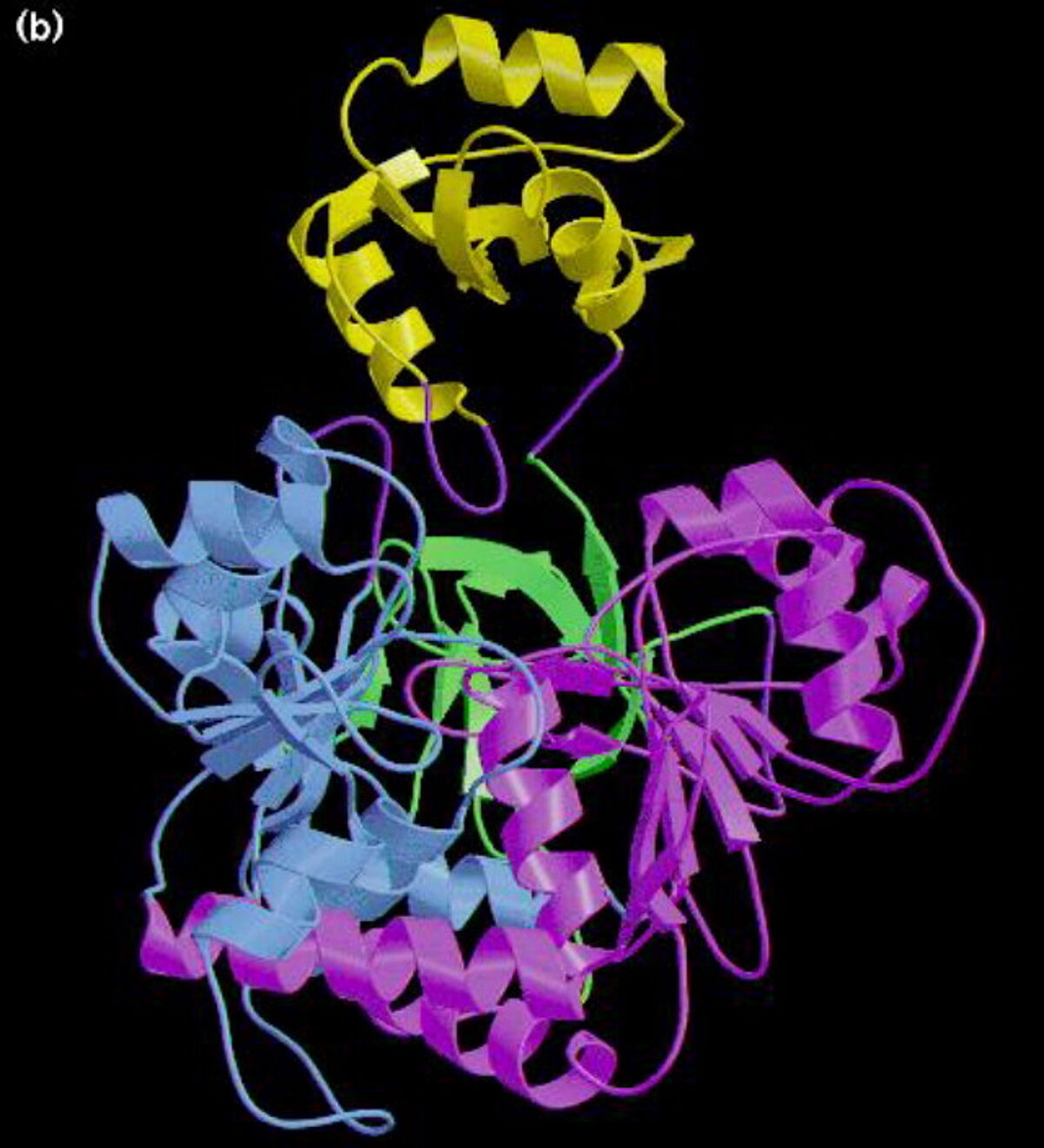Luciferase enzymes catalyze the conversion of chemical energy into light, resulting in bioluminescence. They are used for many different research applications due to the high sensitivity they provide, as well as their capacity for multiplexing.
What is luciferase?
Luciferase is a generic term for a group of enzymes that produce bioluminescence. This typically occurs via oxidative decarboxylation of a specific luciferase substrate, which causes energy to be released in the form of light. Because the luciferase reaction is extremely energy efficient, meaning that nearly all of the input energy is transformed into light emissions, it has been heavily exploited for scientific research. In this setting, luciferase offers high sensitivity for a broad range of experimental applications.
What is the difference between bioluminescence, chemiluminescence, and photoluminescence?
Bioluminescence and chemiluminescence both occur as the result of an enzymatic reaction. Chemiluminescence is the emission of light, due to chemical reactions. For example found in glow sticks. When chemiluminescence takes place in living organisms such as insects, the phenomenon is called bioluminescence. Therefore, bioluminescence is one particular form of chemiluminescence. However, bioluminescence is emitted by a biological source, while chemiluminescence occurs as the result of a non-biological chemical reaction. A well-known bioluminescence example is the reaction of luciferin with ATP in the presence of the enzyme luciferase, which occurs within fireflies to produce their light.(1)
Photoluminescence is distinct from bioluminescence and chemiluminescence in that it requires the excitation energy to come from a light source. Photoluminescence light emission is caused by the absorption of photons. Following the absorption of light with a specific wavelength, specialized molecules known as fluorophores produce emissions at another, longer wavelength to return to their ground state. There are two main types Fluorescence and Phosphorescence. Fluorescence occurs when a substance absorbs photons and re-emits them very quickly, within nanoseconds. An everyday example is a fluorescent highlighter pen, which glows under UV light. Phosphorescence is similar to fluorescence, but the substance re-emits the absorbed photons over a longer period, resulting in a sustained glow even after the removal of the exciting source. Glow-in-the-dark stars are a common example. (2)

Where does luciferase come from?
Luciferase enzymes have been isolated from many different species. These include the North American firefly (Photinus pyralis), the sea pansy (Renilla reniformis), and the Jamaican click beetle (Pyrophorus plagiophthalamus), as well as various bacteria, glow-worms, and fish. Reasons that these organisms produce bioluminescence include to attract a mate, lure in prey, and scare away predators. Bioluminescence may also serve as a form of counterillumination camouflage.
Depending on the species in question, the spectral properties of the emitted light can vary considerably. For example, the North American firefly produces yellow-green emissions, and the sea pansy emits blue light, while the Jamaican click beetle expresses several distinct luciferases that are each capable of emitting light of a different color. This spectral diversity can be exploited for multiplexed applications, provided the chosen luciferases have distinct substrate specificities.
What are the advantages of bioluminescence?
A main advantage of bioluminescence is that it provides high sensitivity due to the enzymatic nature of the reaction. Compared to fluorescence, bioluminescence also has a broader dynamic range and is less likely to produce unwanted background signal. Reduced background signal can be especially useful when performing cell-based assays, where the natural autofluorescence from cellular components such as collagen, riboflavin, and the reduced form of nicotinamide adenine dinucleotide (NADH) is often problematic.
A further advantage of bioluminescence over fluorescence is that there is no risk of photobleaching, a term used to describe the irreversible degradation of fluorophores over time. On the flipside, bioluminescent proteins may have more limited utility that fluorophores for live-cell imaging as they are less stable. However, the relative instability of bioluminescent proteins means they are often preferred for real-time reporter gene assays, when it is important that the reporter is degraded when the gene of interest is not being actively transcribed.
Luciferase applications
- Reporter gene assays are one of the best-known applications of luciferase. They involve cloning the regulatory region of a gene of interest upstream of the luciferase gene and introducing the resultant expression vector into cells. An appropriate luciferase substrate is then added, along with any necessary cofactors, and the luciferase activity is measured. These types of assays can be used to determine which proteins and experimental conditions are required for transcription of the target gene.
Recently, researchers have begun to multiplex bioluminescence reporter gene assays using two or more different luciferase enzymes. Like fluorophores, luciferases with non-overlapping emission spectra can be measured simultaneously. In contrast, luciferases with similar emission spectra can only be combined in the same experiment if they have different substrate requirements.
- Luciferase is also used for monitoring cellular proliferation. This typically involves using an ATP-dependent luciferase to measure the amount of ATP that is present within a population of cells, which will increase with cell number.
- Other applications of luciferase include its use to study protein folding, which is made possible by the fact that luciferase enzymes lose activity upon denaturation. In addition, luciferase is used for investigating the underlying mechanisms of protein secretion and for performing in vivo imaging studies.
Whichever application is being undertaken, it is essential to select a luciferase with the desired properties (e.g., emission spectrum, molecular weight, secreted/non-secreted) and to optimize for the particular model system that is being studied.
LubioScience represents some of the most trusted brands in research and works closely with our partners to offer a wide selection of luciferase-based products. Contact us today to discuss how we can support your project.
Supplier

AAT Bioquest
AAT Bioquest develops bioanalytical research reagents, fluorescent and luminescent probes, nucleic acids and live cells for life science research & assays.

Active Motif
Active Motif offers all you need for researching epigenetics and gene regulation: from sonification devices to ChIP-Seq, CUT&Tag kits as well as validated antibodies.

INDIGO Biosciences
Indigo Biosciences offer products and services focused on nuclear receptors. Learn more about INDIGO’s portfolio of assay kits and services.
"INDIGlo" Luciferase Detection Reagent Kit
More about Indigo Biosciences Shop for INDIGO Biosciences products

BPS Bioscience
Experts in protein design, expression, purification, and characterization, cell line and lentivirus engineering, and biochemical and cellular assay development.
Shop ONE-Step and TWO-Step Luciferase Assays by BPS Bioscience
Refrences
- https://www.aatbio.com/resources/faq-frequently-asked-questions/What-is-the-difference-between-chemiluminescence-and-bioluminescence
- https://sciencenotes.org/luminescence-definition-and-examples/
Images
- E. Conti et al., Crystal structure of firefly luciferase throws light on a superfamily of adenylate-forming enzymes, Structure (1996) https://doi.org/10.1016/S0969-2126(96)00033-0
- https://sciencenotes.org/luminescence-definition-and-examples/
- Alex Wild Photography, https://www.alexanderwild.com/Insects/Fireflies/i-JCK4T59
- Media drum world/alamy stock photo https://superscience.scholastic.com/pages/promotion/navigationlps/090121/where-in-the-world.html?language=english
- Julian money-kyrle/ alamy stock photo https://superscience.scholastic.com/pages/promotion/navigationlps/090121/where-in-the-world.html?language=english
- https://oceanexplorer.noaa.gov/explorations/02sab/background/biolum/media/biolum.html
- P. Parmar et al., Comprehensive depiction of novel heavy metal tolerant and EPS producing bioluminescent Vibrio alginolyticus PBR1 and V. rotiferianus PBL1 confined from marine organisms (2020) https://doi.org/10.1016/j.micres.2020.126526
- Animated biology With arpan, https://www.youtube.com/watch?v=ySZCdJz5Oac
- Morciano, G., Sarti, A., Marchi, S. et al. Use of luciferase probes to measure ATP in living cells and animals. Nat Protoc 12, 1542–1562 (2017). https://doi.org/10.1038/nprot.2017.052








